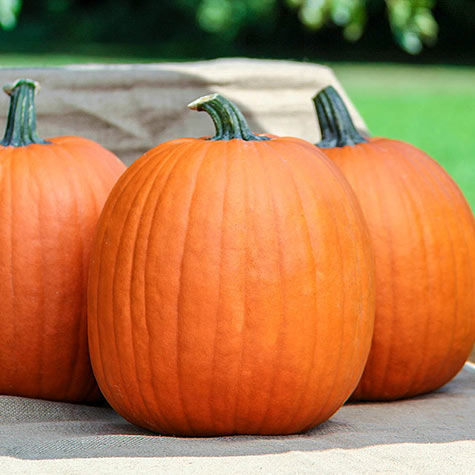While I’m quite fond of Trick-or-treating, carving Jack O’ Lanterns is my favorite Halloween activity, still! Back when I was in school, my dad and I would spend hours in the kitchen garden, selecting ones good enough to fit the role. And we always had pumpkin pie for our special Halloween dessert. Oh, the benefits of growing pumpkins! Another wonderful thing about them is that they’re so very easy to cultivate. Here’s some information on how to grow pumpkins from seed.
When to Plant Pumpkins
Planting pumpkin seeds is best done in the spring when the danger of frost is over. While seeds for giant varieties need to be started indoors, seeds for regular-sized varieties can be planted directly in the garden. Growing pumpkins can be achieved in almost every type of soil.
How to Plant Pumpkin Seeds
Clear all weeds and stones from the planting site and dispose of them. Adding organic manure or compost to the soil is an inexpensive but effective way of enriching the soil. Use a garden hose to create mounds, 5-6 inches high. For information on the right spacing and planting depth for planting pumpkin seeds, refer to the instructions on the seed package.
How Much Sunlight do Pumpkins Need?
Pumpkins need a minimum of six hours of direct sunlight daily, and 8 to 10 hours is ideal. Sunlight helps the plants grow and also dries out the leaves. (Wet leaves can make the plants more susceptible to disease).
How to Fertilize Pumpkins?
When the vines begin growing and spreading, side dress with a fertilizer or plant food. An all-natural, slow-release fertilizer, like Gurney’s Vegetable Food, promotes steady growth.
How Much Water do Pumpkins need?
Pumpkins need a minimum of one inch of rainfall weekly. Water deeply a few times a week during dry spells.
How to Harvest Pumpkins and How Long Will it Take
Pumpkin seeds germinate within a couple of weeks from planting. Irrigate twice a week, making sure the plants receive all the moisture they need for growth. Once the plants establish, irrigate deeply, whenever the soil appears to dry up. With a little care, the pumpkins will be ready to be harvested by mid to late fall. But remember to pick the pumpkins before the frosts begin.
Pumpkin Varieties
Pumpkins vary in sizes and uses. While some are used for decoration, others are used for making into soups and pies. Here are some popular pumpkin varieties:
Connecticut Field Pumpkin
Heirloom variety is one of the best for carving! Vines produce fruits weighing 15-20 lbs.— the ideal size for big jack-o’-lanterns and fall decorations. Their flattened bottoms make them easy to display.
Jack Be Little Pumpkin
Miniature pumpkins are ideal for fall decorations. This heirloom variety produces fruits that are 4 inches across. While most often used for decorations, the small pumpkins are just the right size for using as bowls for serving soups.
Naked Bear Hybrid
A culinary delight! The 2-4 lb. fruits are fine-grained, smooth and sweetly flavored—excellent for pies and soups. The seeds are hull-less, making them perfect for roasting for a wonderful snack.
Pumpkin Diseases & Pests
Pumpkins can be bothered by both insects and diseases. Common insect pests that bother pumpkins are squash bugs, squash vine borers and striped cucumber beetles. Monitor your plants for signs of insect pests. Pumpkin plants can also be susceptible to several fungal diseases. Some preventatives steps gardeners can take to control diseases are rotating crops, selecting disease-resistant varieties, and avoiding overhead watering. Several disease control products are also available.
Other Tips for Growing Pumpkins
Growing pumpkins is just as much fun as carving and eating them. To successfully grow pumpkins, just follow these tips:
- Pumpkins are warm-season vegetables. If direct seeding, make sure the soil temperature is at least 65 degrees.
- Plant pumpkins where they have plenty of space to spread out and at least 6 hours of direct sunlight daily.
- Avoid overhead watering, and water in the mornings.
- Mulching can conserve soil moisture and suppress weeds. Wait to mulch until the soil temperature reaches 75 degrees.
- Monitor your pumpkin plants for signs of insect damage or disease.


